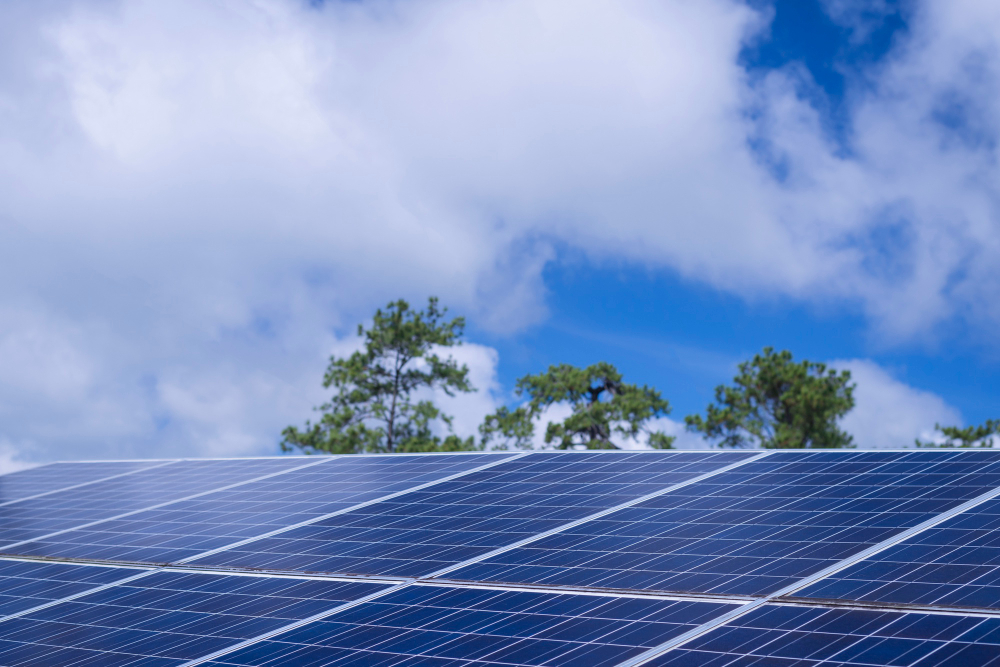Solar energy is an eco-friendly and cost-efficient alternative for consumers who are considering installing best solar panels on their property. But, at the same time, there are several types of solar panels available on the market now as well so it can be tough to understand what kind of solar panel is going to work best for you. This article from Redingron Solar explores the distinct types of solar panels available, their advantages, and disadvantages, and how to decide the best solar panel for home in India.
Monocrystalline Solar Panels
Monocrystalline solar panels are made up of a single crystal structure from start to finish. These are known for their high reliability.
Advantages:
- High efficiency: Monocrystalline panels have the highest efficiency rates, usually in the 15-20% range, meaning they can convert more sunlight into electricity.
- Durable: They have a high life expectancy, often coming with a 25-year warranty.
- Space-efficient: They require less space compared to other panels due to their higher efficiency.
Disadvantages:
- Cost: Monocrystalline panels are the most expensive type of solar panel available.
- Performance in high temperatures: Their efficiency can decrease in extremely hot climates.
Polycrystalline Solar Panels
Polycrystalline solar panels are constructed from numerous silicon crystals melted together. They are less powerful than monocrystalline panels yet more affordable.
Advantages:
- Cost-effective: Polycrystalline panels are generally more affordable for the consumer as they cost less to manufacture.
- Low heat tolerance: These panels perform better in high temperatures compared to monocrystalline panels.
Disadvantages:
- Less efficient: Polycrystalline panels tend to be less efficient, generating around 13-16% efficiency levels.
- Space requirements: They need more space to produce the same amount of electricity as monocrystalline panels.
Thin-Film Solar Panels
Thin-film solar panels are produced by applying a thin layer of photovoltaic material on a substrate such as metal or glass. They are lightweight and flexible, suitable for various applications.
Advantages:
- Lightweight: Thin-film panels are extremely lightweight, making them easier to transport and install.
- Flexibility: These panels can be mounted on irregular or flexible surfaces.
- Cost: Thin-film panels tend to be less expensive to manufacture.
Disadvantages:
- Less efficient: Thin-film panels tend to have lower efficiency rates, typically between 10-12%.
- Shorter lifespan: These panels have a shorter lifespan compared to monocrystalline and polycrystalline panels.
- Space requirements: They require more space to generate the same amount of electricity due to their lower efficiency.
Bifacial Solar Panels
Bifacial solar panels can capture sunlight from both sides, increasing their overall efficiency. They are typically made from monocrystalline or polycrystalline materials.
Advantages:
- Higher efficiency: Bifacial panels capture sunlight on both sides, producing more energy than standard solar modules.
- Durability: These panels are designed to withstand harsh weather and have a long lifespan.
- Aesthetics: Bifacial panels can be more visually appealing as they can be integrated into various architectural designs.
Disadvantages:
- Cost: Bifacial panels are generally more expensive than traditional solar panels.
- Installation: They require a more complex installation process with specialized mounting systems.
Choosing the Best Solar Panels For Your Home
Now that you have a clearer picture of the different kinds of solar panels, you might be wondering which best solar panel in india for home. Here are a few things to consider:
- Budget: Determine your budget and balance the upfront costs against the long-term savings.
- Space: For installations with limited space, high-efficiency panels like monocrystalline or bifacial types are excellent choices.
- Climate: Consider the climate in your area. Polycrystalline panels may perform better in regions with high temperatures.
- Aesthetics: Consider the appearance of the panels and how they will fit into your home’s design.
Investing In Residential Solar Systems And Solar Rooftop Insurance
Residential solar systems are no small investment, so it’s important to protect your assets. Solar rooftop insurance can cover damages caused by weather events, theft, or other unforeseen circumstances, ensuring your solar panels are protected and allowing you to enjoy the benefits of solar energy without worry.
Conclusion
Understanding the different types of solar panels and their advantages and disadvantages can help you make an informed decision about which solar panel is best in India for your home. Whether you choose monocrystalline, polycrystalline, thin-film, or bifacial panels, each type has its unique benefits. Additionally, investing in residential solar systems and solar rooftop insurance can provide peace of mind and ensure that you maximize the benefits of your solar energy system. By considering your budget, space, climate, and aesthetic preferences, you can choose the best solar panel in India for your home and enjoy the long-term savings and environmental benefits that solar energy has to offer.





